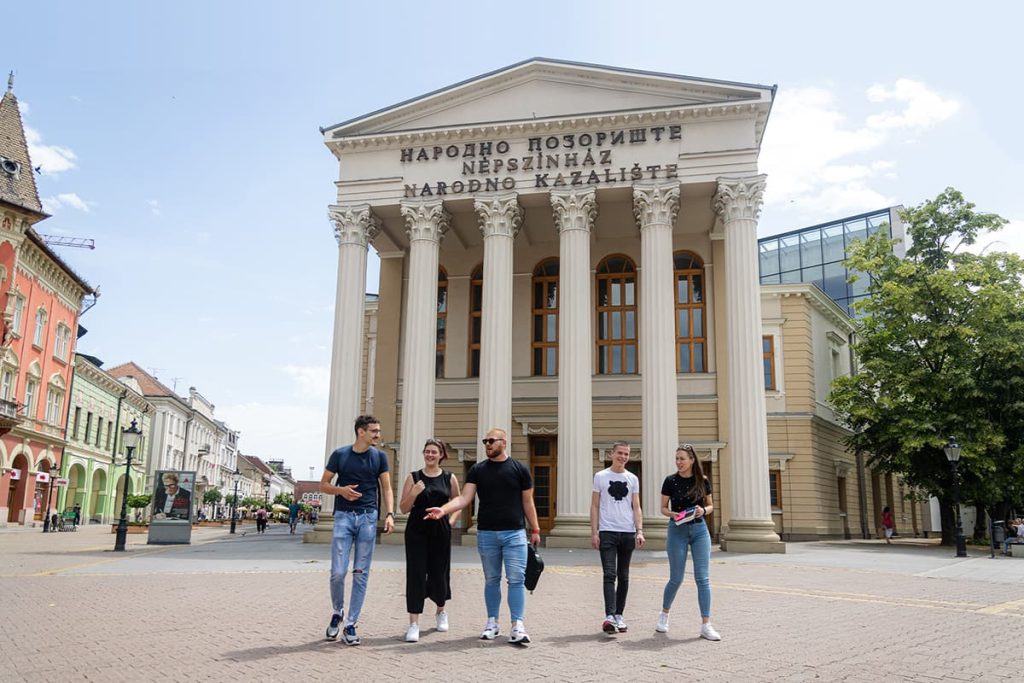Subotica
Studying in Subotica
Take the most of a small town – the faculty is in a beautiful park, just five minutes from the centre and a couple of minutes walk from the dorm, with significantly lower living costs than in big cities, a safe and friendly environment, and many cultural and educational events.
The faculty has the support of the town on all issues and excellent cooperation with the local government, as evidenced by the document signed by the dean and the town mayor.
Subotica is a town in the north of Vojvodina, close to the border with the Republic of Hungary. It was first mentioned in written documents in 1391, although archaeological research indicates that there was a settlement in this area much earlier.

The town, located at the crossroads of Europe and Asia, was referred to under the names of Zabotka, Szent Maria, and Mariatheresiopolis during the reign of the Austro-Hungarian Monarchy. At the end of the 19th and the beginning of the 20th century, it developed into a modern Central European town – the first railway (1864), the first modern industrial plant (1879), a gas plant (1890), a power plant (1896), a tram, etc.
Today, Subotica has around 100,000 inhabitants of different nationalities and religions and is one of the most important cultural, educational, scientific, economic, and sports centres of northern Bačka. The beginning of schooling dates back to the end of the 17th century – the predecessor of a secondary school was opened in 1747, a primary school for members of the Orthodox (1710) and Catholic religion (1732), as well as a music school in 1868. The town has three faculties (Economics, Civil Engineering and Hungarian Language Teacher Training Faculty), two colleges of vocational studies (Technical College of Vocational Studies and College of Vocational Studies for Teacher Education), and a large number of secondary and primary schools.
The architecture of Subotica displays real civil engineering masterpieces. The Town Hall (1908-1910) represents an extraordinary combination of art and craft, which, together with the Synagogue (1902), is one of the largest and most beautiful buildings in this part of Europe. The National Theatre (1853), with its six Corinthian columns, is currently undergoing extensive restoration, and the Reichl Palace from 1904 stands out as the greatest work of Secession. The neo-baroque style of the Town Library (1897), the General Lyceum building (1899) and many other lesser-known buildings should also be mentioned.
About ten kilometres north of Subotica, there is an inseparable part of Subotica, and the town’s favourite promenade and bathing area, Lake Palić, which is believed to be the remnant of the Pannonian Sea. The same year, at the beginning of the last century, when the Subotica Town Hall was ceremonially opened, Lake Palić grew into a then-famous and very well-known resort, with a baroque park, the Water Tower, the Grand Terrace, the Women’s Ledo, and many summer houses.
